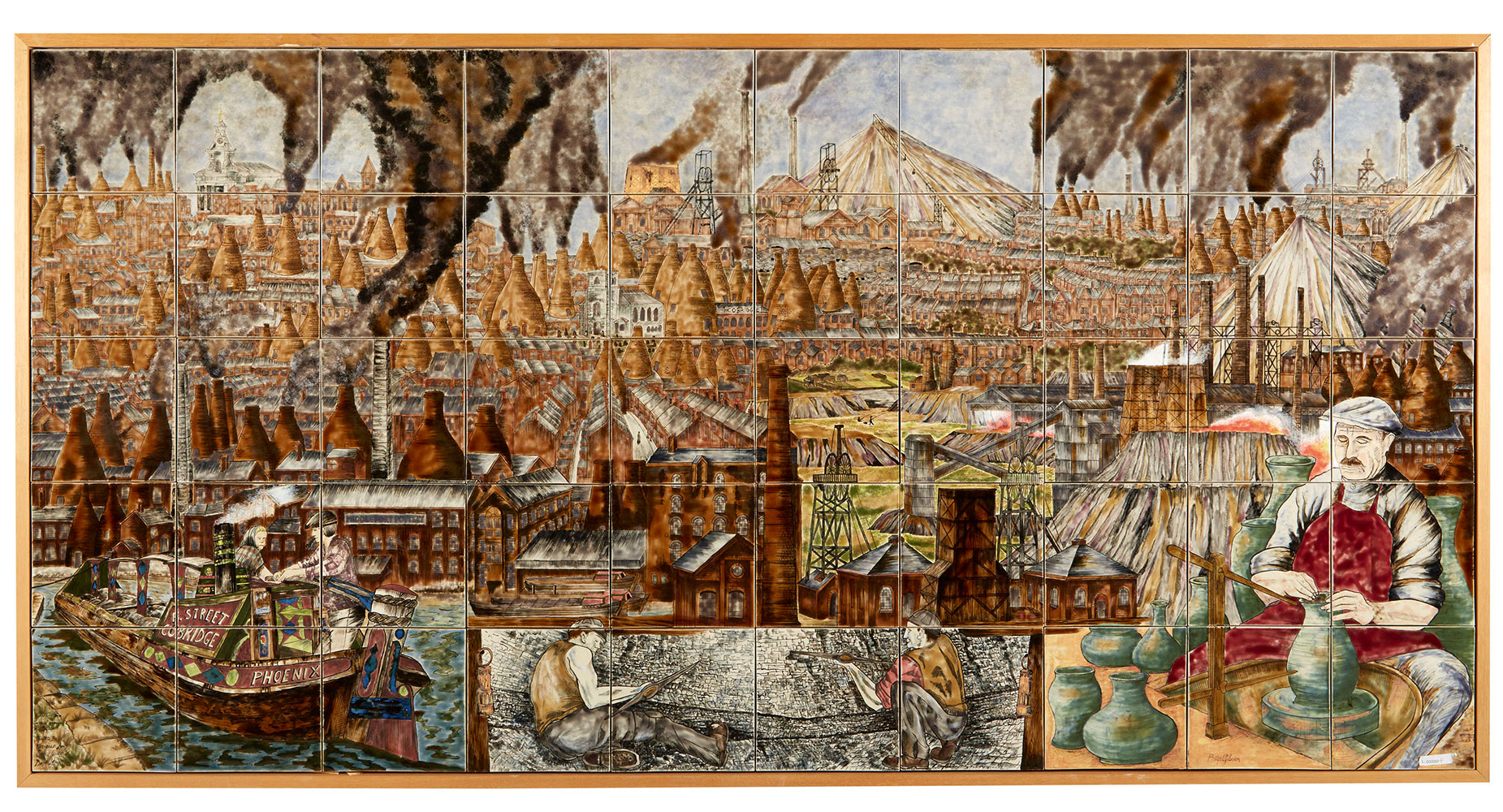
Cobridge Stoneware Tile Panels of the Potteries by Philip Gibson
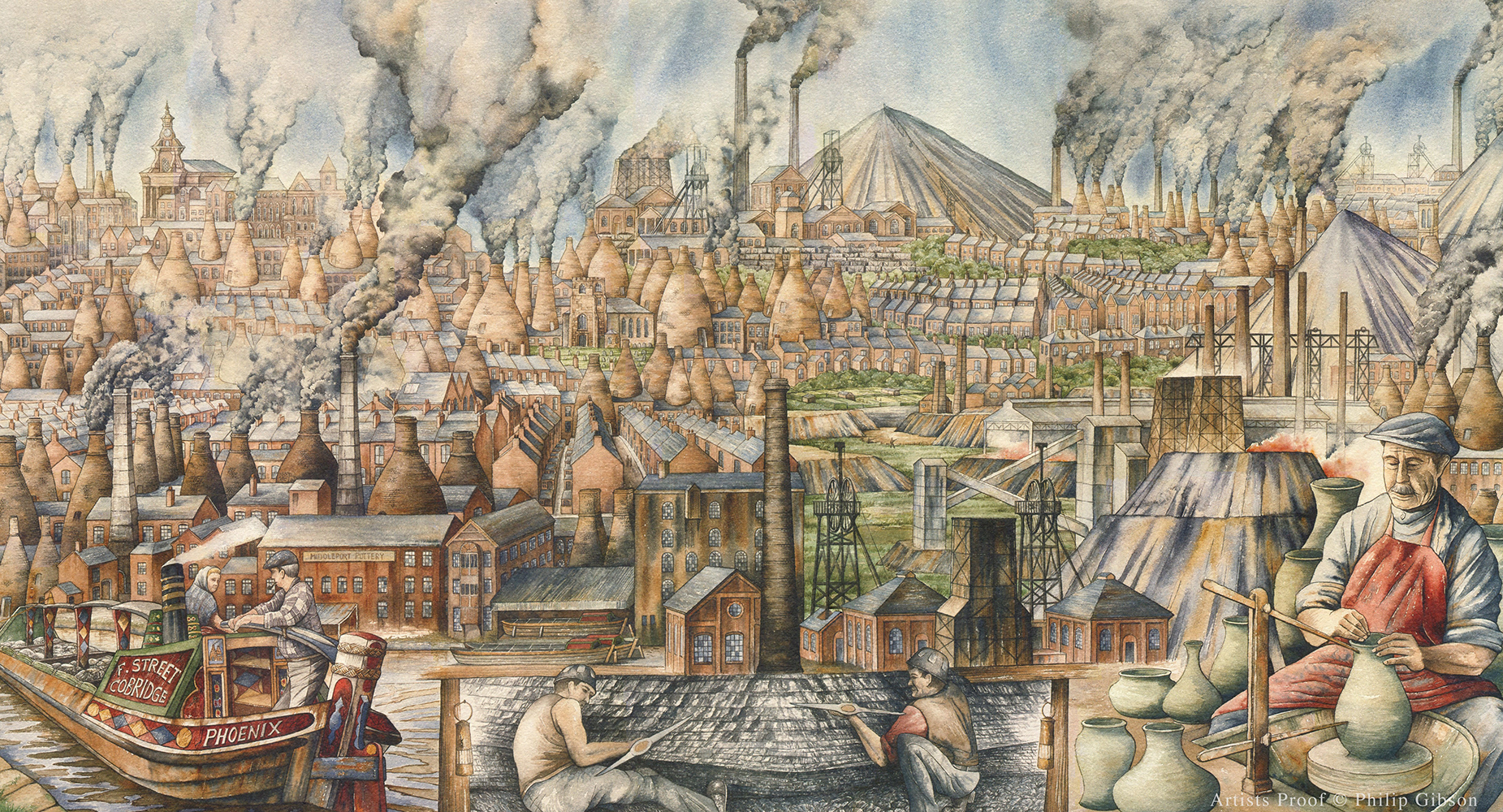
Cobridge Stoneware Tile Panel watercolor
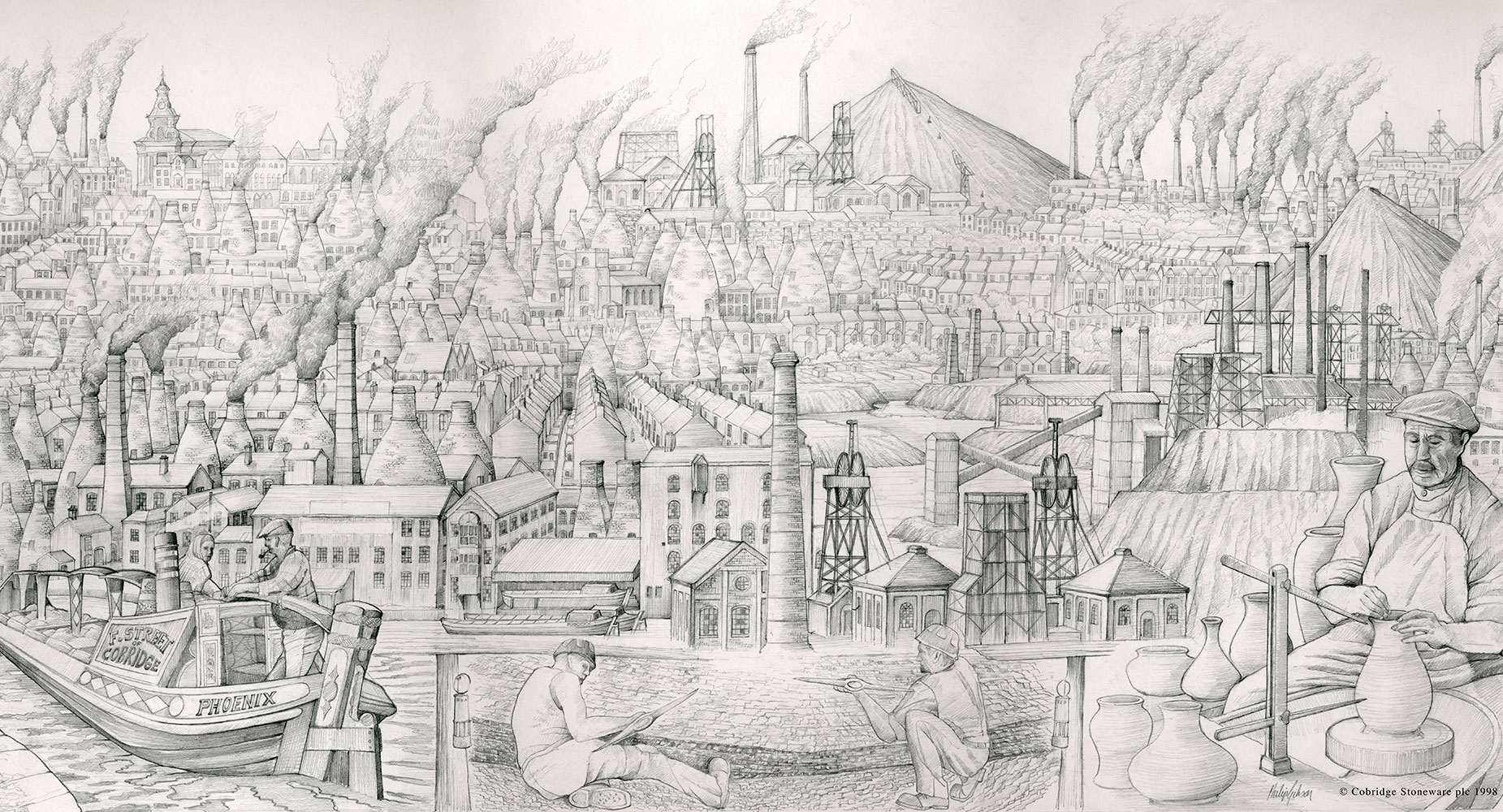
Cobridge Stoneware Tile Panel Drawing
By Philip Gibson
The project was originally commissioned as a tile tableau to grace the Cobridge Stoneware factory shop and foyer. My idea had deep-rooted connections to the Potteries and would go back to my childhood years with early experiences of images and noises with the grime and the smells of the Potteries landscape.
I was born in the fifties in Wolstanton and we moved to Porthill in the sixties. Our home overlooked Burslem and Cobridge and I would awake each morning to experience this view along with the noises of the Potbank whistle calling its workers and the grinding and smelting mills of Shelton’s steel bar. The smoke and grime from the chimneys and bottle kilns would darken the sky and in the evening there would be the red glow from the blast furnaces of the steel works. It was all mayhem and confusion but somehow it was a fascinating scene for a young boy whose bedroom overlooked such chaos. I had grown up with years of this scene and it had become firmly etched in my mind. I fondly knew it well.
Further to this while at school all the boys in our metalwork class were treated to a trip around Shelton Steelworks where we could see first-hand the blast furnaces and the steel roller mills where molten ingots of red-hot steel were drawn and rolled into all sorts of steel beams and bars. The noise was deafening and the heat almost unbearable as this took place in huge metal sheds.
I eventually came to work amongst its friendly workers during my holidays from the local art school and eventually its famous ceramic college where I would train as a pottery designer. I would earn money for my keep at home and to pay for my adventurous climbing and walking trips to the Peak District close by, and eventually further afield to Wales and beyond with my brother Gary.
Thus, the process of designing the panel would have to start and be able to fit a board 4 by 8 feet. Although I had the image in my mind it was not going to be easy. It was a ‘big task’ as it was to grace a new pottery venture and eventually to celebrate the millennia at the new Ceramica exhibition in the Potteries ‘Mothertown’ known as Burslem - a fitting venue.
I had the idea of using the Middleport Pottery, which more recently has been renovated into a working museum, supported by The HRH Prince Charles, along with Wolstanton Colliery and the Shelton Steelworks (both now long gone). These were to be the key elements which would sit in the foreground; exactly the scene from my bedroom window.
To further enhance this, I decided to add a ‘human factor’ in the form of the key workers from these industries, as they were the lifeblood; the skill of the potter, the hard and back breaking work of the coal miners. Many of my uncles worked down there too.
It was difficult to show the intricacies of the canal system in the scene thus I would celebrate this by introducing a canal “butty barge” which was highly decorated and would act as a useful device to lead your eye in from the left to the main scene. I decided to name the barge Phoenix in celebration of the new Cobridge Stoneware factory based in Cobridge.
The whole scene was to have a rhythm, almost a ‘hustle and bustle’ about it and I used hundreds of bottle kilns and terraced workers houses to weave the whole scene together, for it was they who held the industry together. I had the greatest respect for them. I researched carefully at Stoke-on-Trent city library and the museum to locate many of the bottle kilns and chimneys which have now been demolished. It was a painstaking task studying maps but I wanted it to be an historical record as close as possible.
I played with sketches and ideas for hours and hours and created it out as a pencil drawing, which I divided up into a matrix of 50 tiles, each 7 inches square. It was difficult to get all the scenes and activities into this area but with careful arranging it started to come together. The pencil drawing was
I painted a highly finished watercolor at a slightly larger size to the original pencil drawing and this became the master color image for the production tableau. Eventually, it was decided to produce a limited-edition lithographic print of 750 that I would sign, number and emboss with a Cobridge Stoneware logo. I supervised the scanning of the watercolor and was present at the printing process.
Finally, I was privileged and honored to be asked by the company to be given the opportunity to bring my memories to life.I will always be proud of the completed tile panel, watercolor and associated drawings.

Philip Gibson at the Moorcroft Pottery
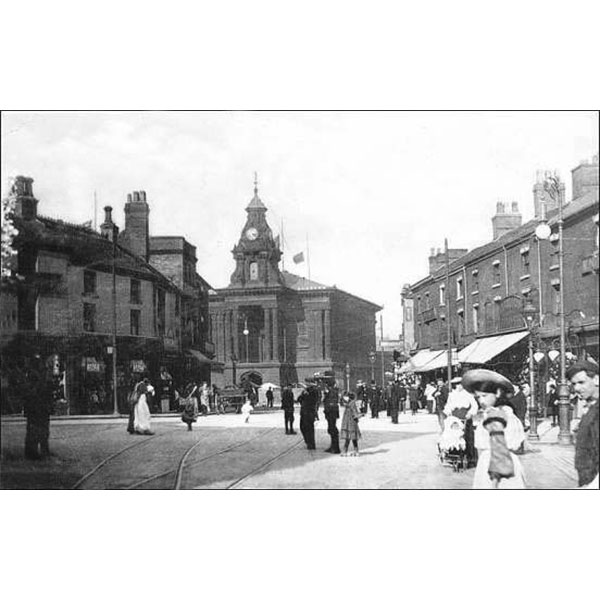
Burslem Town Hall Marketplace Postcard
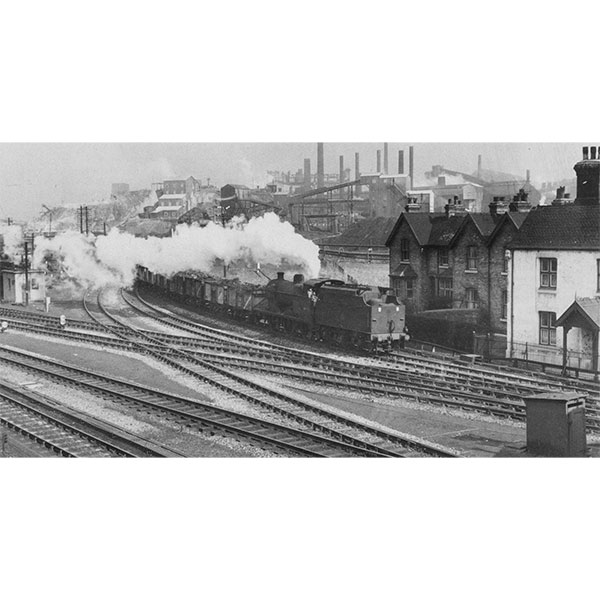
Loop Line Etruria Ironworks
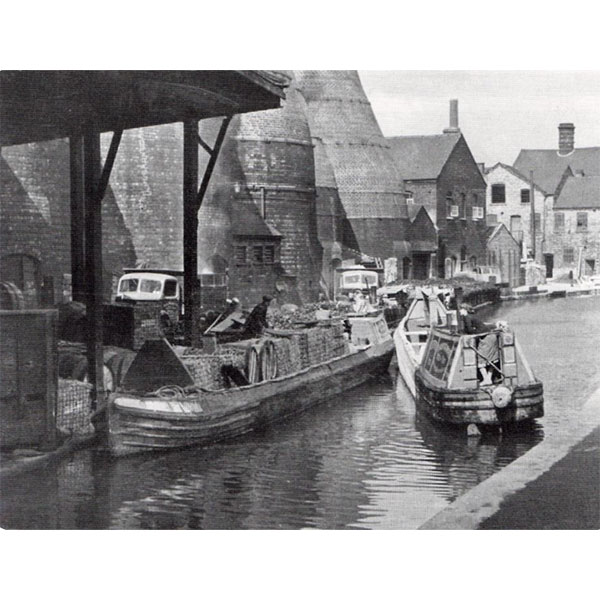
Potteries Canal Boats
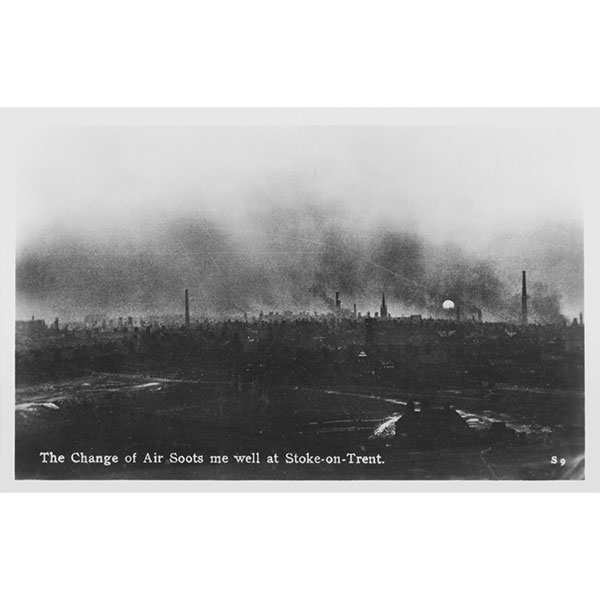
Soots Me Well Postcard
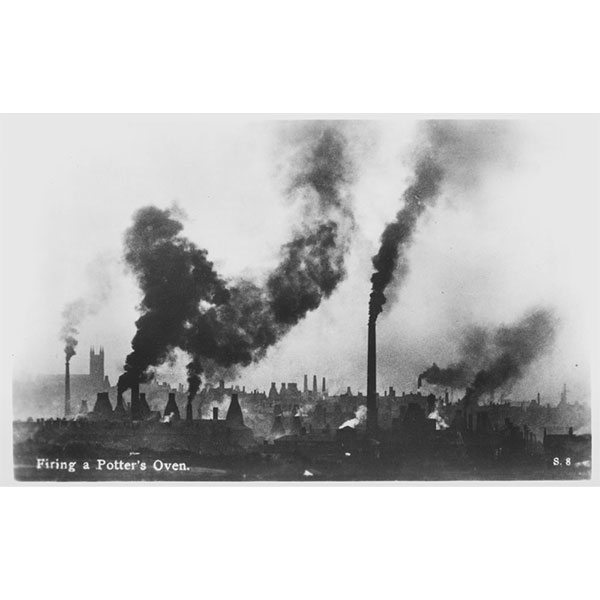
Firing a Potters Oven Postcard
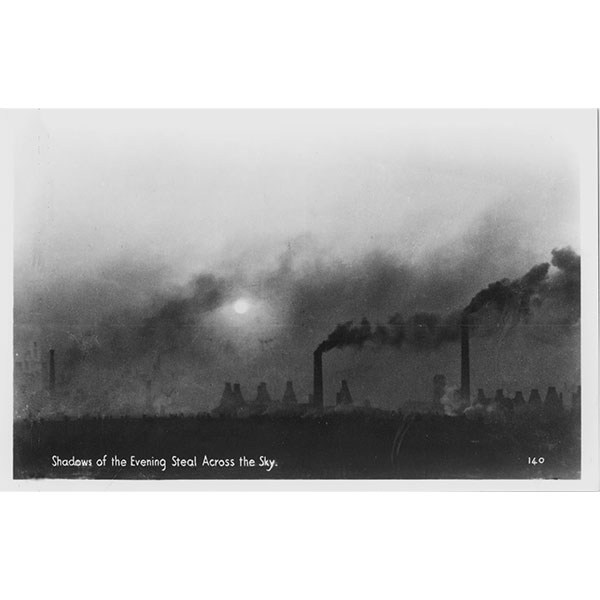
Shadows of the Evening Postcard
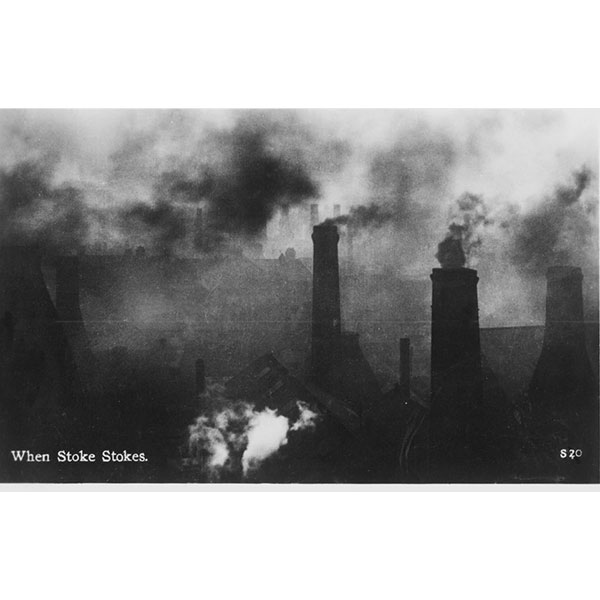
When Stoke Stokes Postcard
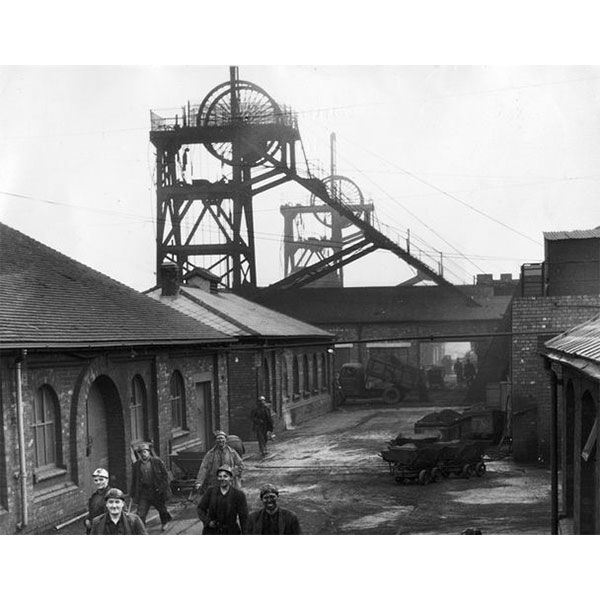
Wolstanton Colliery
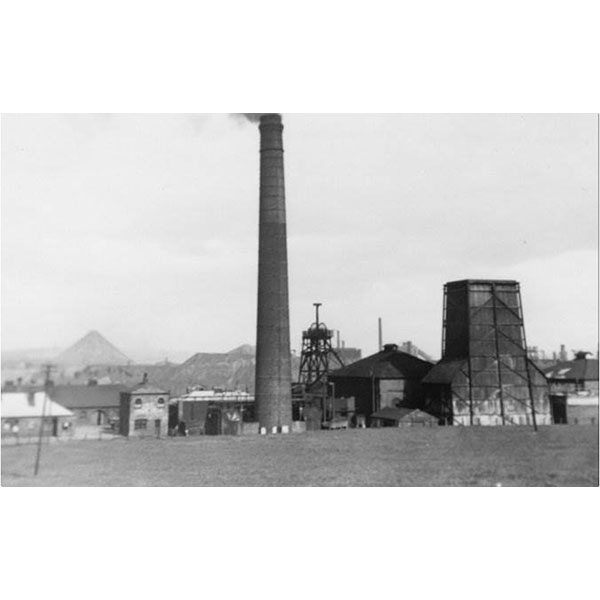
The Potteries Clay Pits
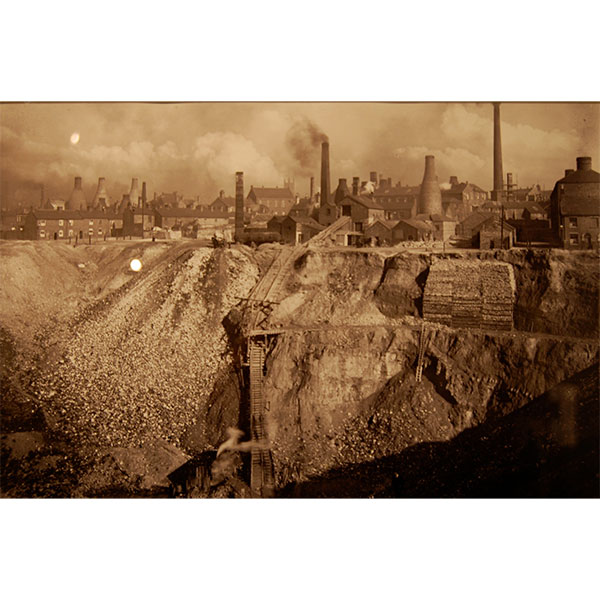
The Potteries Clay Pits
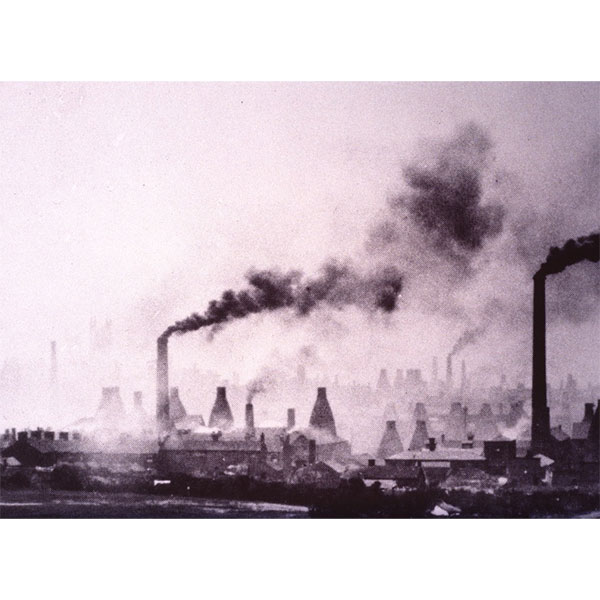
Stoke in Smoke
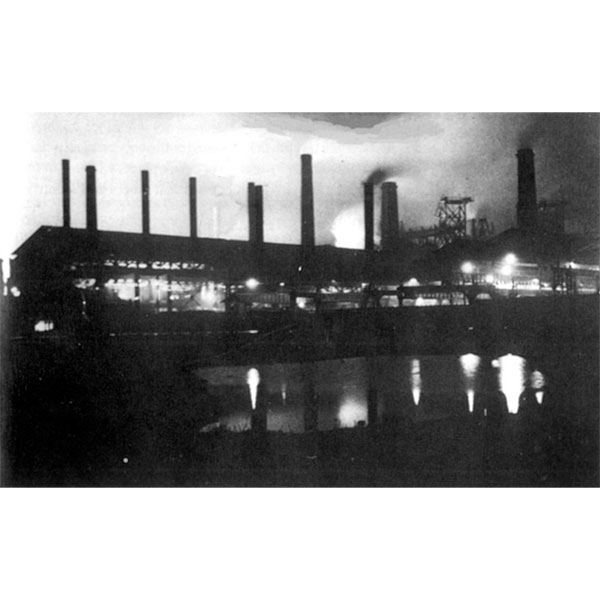
Shelton Steelworks Lighting the Potteries
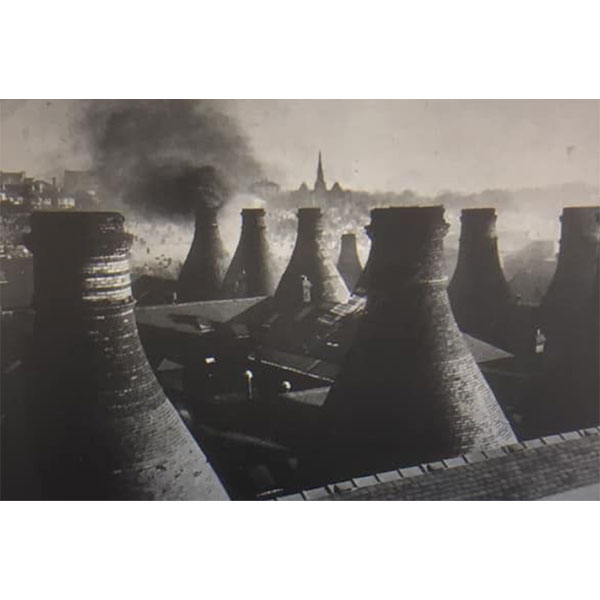
Bottle Kilns in the Potteries
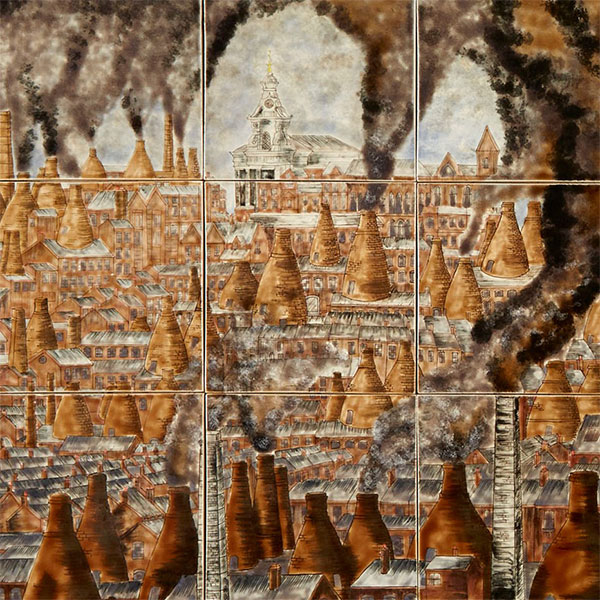
Bottle Kilns Firing & Burslem Town Hall Potteries Panel
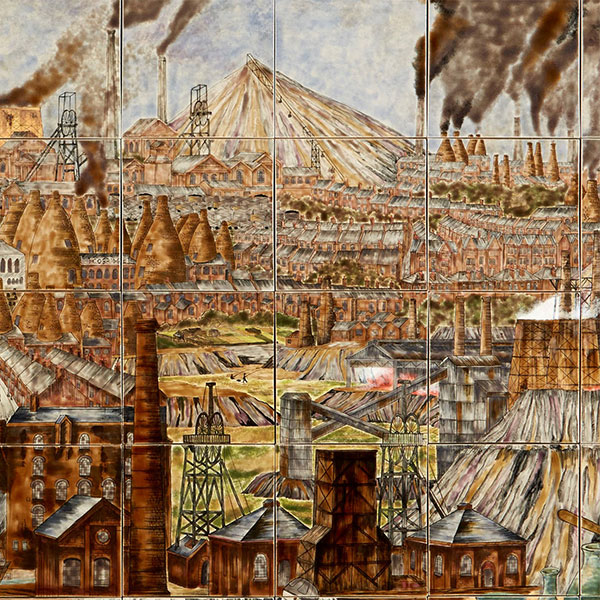
Wolstanton Colliery and Sneyd Tip Potteries Panel
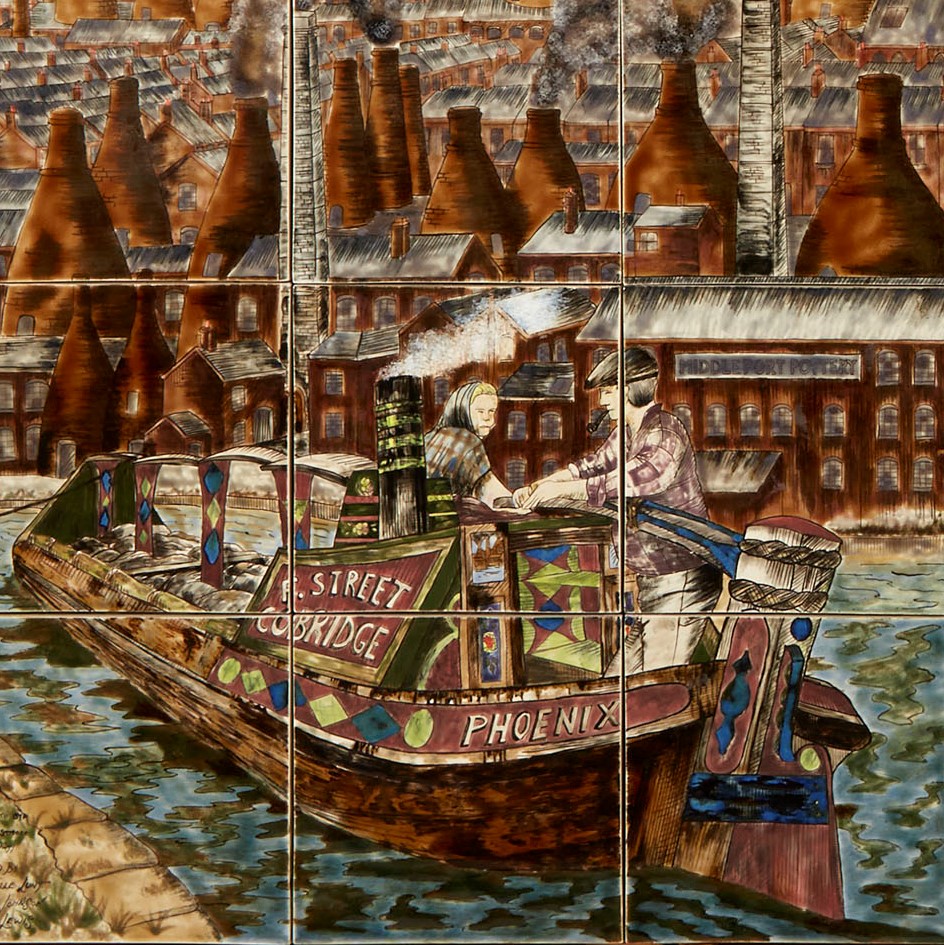
Phoenix Barge Potteries Panel by Philip Gibson
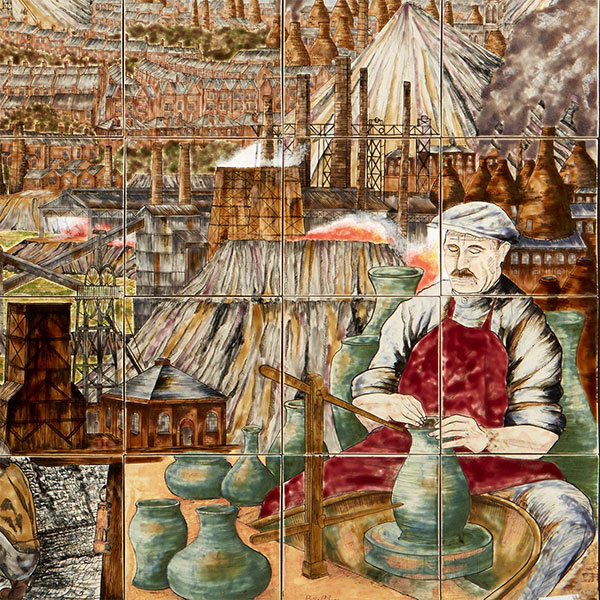
Potter on Wheel Cobridge Potteries Panel by Philip Gibson
